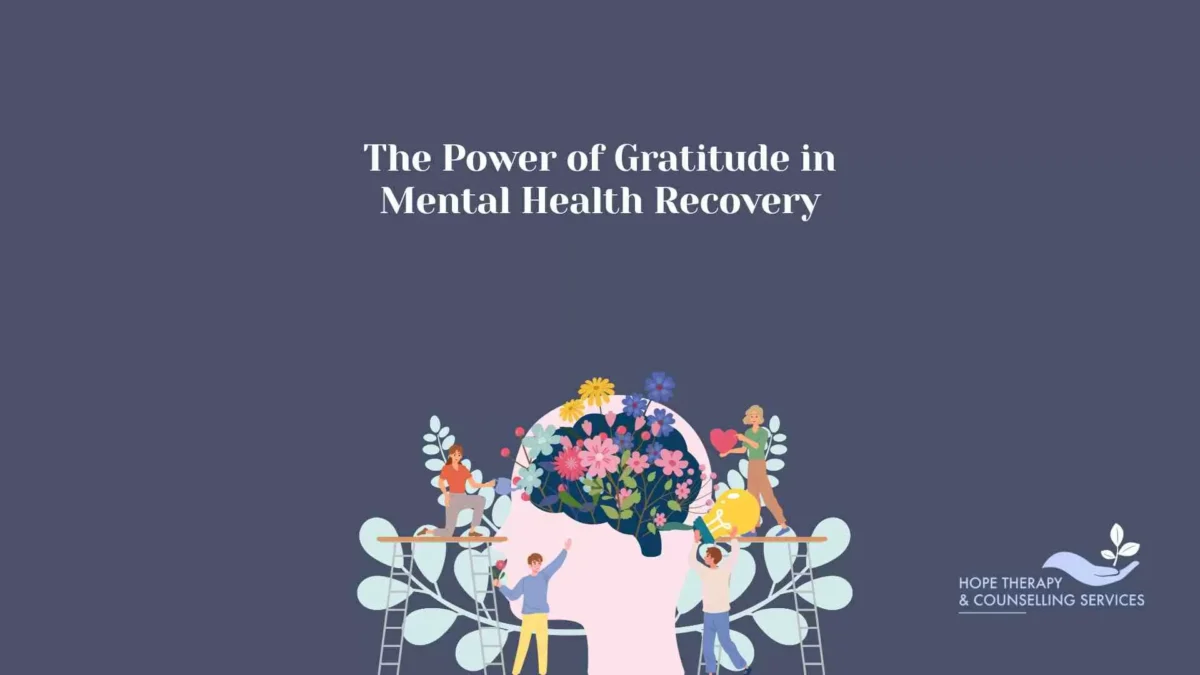When you’re living with anxiety, depression, or trauma, the last thing you might want to hear is: “Just be grateful.” And rightly so—gratitude isn’t a shortcut, a cure, or a way to gloss over real pain.
But when practised with intention and authenticity, gratitude can quietly support your recovery. It’s less about toxic positivity and more about shifting the lens, moment by moment, to see what is also true: even in struggle, there may be warmth, connection, or small comforts.
What Gratitude Actually Is
Gratitude is the act of noticing and acknowledging what’s nourishing, helpful, or meaningful. It might be a hot cup of tea, a pet’s affection, a favourite song, or a moment of peace in a turbulent day.
You don’t have to feel grateful for everything to experience the benefits of gratitude. You’re allowed to hold both pain and appreciation.
Why It Helps
Gratitude isn’t about denial. It’s about balance. When you start to regularly notice what is working, your brain slowly begins to rewire itself out of hypervigilance and into grounded awareness.
Studies show gratitude can:
- Reduce symptoms of anxiety and depression
- Improve sleep quality
- Strengthen emotional regulation
- Enhance relationships and social connection
Gratitude anchors you in what’s real. It reminds your nervous system: There is still good here.
How to Start (Gently)
You don’t need a five-year journal. You can begin with:
- Saying thank you—to yourself, to others, or aloud in the quiet of your home.
- Noticing beauty: a tree, a laugh, the way the light lands on the floor.
- Ending the day by naming three small things that brought ease or joy.
It doesn’t have to be deep. It just has to be honest.
Rebuilding from a Place of Gratitude
Hope Therapy can help you explore gentle, grounded practices—like gratitude—that support long-term recovery. Your healing doesn’t need to be hard-edged. It can be soft.
👉 Book your free consultation
Quick Guide: Stop Anxiety in Under a Minute
Anxiety doesn’t always announce itself politely. It crashes in—heart racing, thoughts spiralling, palms sweating—and demands attention. While long-term recovery takes time, sometimes you just need a lifeline: a way to bring your body and mind back online now.
Here’s how to interrupt anxiety fast—without dismissing it.
Grounding Technique: 5-4-3-2-1
This sensory exercise pulls your focus away from panic and back into the body:
- 5 things you can see
- 4 things you can touch
- 3 things you can hear
- 2 things you can smell
- 1 thing you can taste
Try it slowly, deliberately. Speak them aloud if you can. It signals safety to your brain.
Breathe Low and Slow
Panic breathing is shallow and fast. To override it, try this:
- Inhale gently through the nose for 4
- Exhale through the mouth for 6
- Repeat for one minute
This activates the parasympathetic nervous system, your body’s natural calm-down mechanism.
Name the Fear
Sometimes, saying what you’re afraid of out loud—or writing it down—helps deflate its power. Try: “I’m scared that ___ will happen. But right now, I am safe in this moment.”
It’s not about solving everything. It’s about soothing your body long enough to feel like yourself again.
Struggling with Anxiety That Won’t Let Go?
Hope Therapy offers compassionate support for anxiety, including grounding techniques, CBT, and long-term emotional regulation strategies.
👉 Book your free consultation

